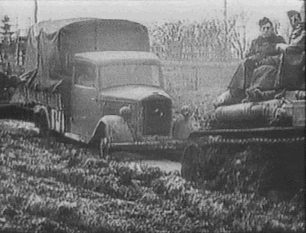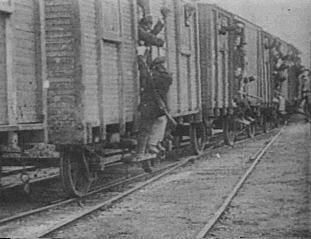 Russian winter, German operations stymied
Russian winter, German operations stymied Fighting in Yugoslavia
By the time Germany attacks Russia in June, Soviet generals are able to stall the Nazis long enough to enlist their great historical ally: Winter.
 Russian winter, German operations stymied
Russian winter, German operations stymied
The first snow falls in early October turning roads to mud; soon the freezing Russian winter brings Luftwaffe operations almost to a standstill. Nazi deployment capability plummets with the temperature. At fifty below, most German war machinery is inoperable.
Russians in snow, looking efficient
The Soviets, on the other hand, are trained and equipped for the bitter cold, and begin a counteroffensive in the dead of winter.
Industry packed up and moved East of Urals
They also seize the opportunity to mount one of the greatest feats of logistics in military history. The Soviets crate and ship almost their entire defense industry more than a thousand miles east, beyond the Ural mountains – and out of German bomber range.

Russian trains
In five months, 13-hundred and sixty munitions plants alone have been moved eastward in one-point-five million freight car loads.
New aircraft factory, sans roof
Aircraft factories are thrown up in days... churning out planes before the roof is even up, in temperatures down to forty below.
©1994 Discovery Communications All Rights Reserved